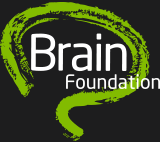Description
Tay-Sachs disease (TSD) is a fatal inherited (genetic) disorder of the central nervous system. Infants with the disorder appear to develop normally for the first few months of life, then at about the age of six months of age, a deterioration of mental and physical abilities begins. The child stops smiling, crawling or turning over, loses their ability to grasp or reach out, and gradually becomes blind and paralysed. It affects both male and female babies.
TSD is most common amongst descendants of Central and Eastern European (Ashkenazi) Jews and some French Canadians. TSD is caused by inheriting a ‘double-dose’ of a fault in a gene which codes for the Hex-A enzyme. Every person has two copies of this gene in each cell of their body. A person will only be affected by TSD if they have a fault (mutation) in both copies of the Hex-A gene. This can only happen if one faulty copy is inherited from each parent. About one in every 26 Ashkenazi Jews and 1 in every 40 French Canadians carries one copy of the faulty gene and one regular copy of the gene. In the general population, however, only about one in 300 people carry a faulty copy of the Hex-A gene. Carriers are not themselves affected by the disease.
If both parents carry a copy of the faulty gene then there is a 1-in-4 (25%) chance that the child will inherit the faulty Hex-A gene from both parents. This child will be affected by Tay-Sachs disease. The chance remains the same for each pregnancy.
A simple blood test can distinguish Tay-Sachs carriers from non-carriers and genetic counselling is available for those in high-risk groups such as those mentioned above.
TSD is one of a group of genetic diseases known as storage diseases which are caused by the abnormal accumulation of certain waste products in the cells or tissues of the affected person.
Treatment
There is presently no treatment for Tay-Sachs Disease, only ways to make the patient more comfortable.
Prognosis
The disease tends to progress rapidly, and the child usually dies by the age of four or five.
Further Information and Support
Click here for the latest Australian research papers on Tay-Sachs Disease.
Rare Find Foundation – Australia
www.rarefindfoundation.org
National Tay-Sachs & Allied Diseases Assocation – USA
www.ntsad.org
National Institute of Neurological Disorders and Stroke – USA
www.ninds.nih.gov/Disorders/All-Disorders/Tay-Sachs-Disease-Information-Page
National Institute of Health – USA
www.nlm.nih.gov/medlineplus/ency/article/001417.htm
Reviewed by Dr Carolyn Ellaway, Clinical Geneticist, The Children’s Hospital at Westmead, Australia
DISCLAIMER: The information provided is designed to support, not replace, the relationship that exists between a patient / site visitor and his / her existing health care professionals.



 The Brain Foundation is the largest, independent funder of brain and spinal injury research in Australia. We believe research is the pathway to recovery.
The Brain Foundation is the largest, independent funder of brain and spinal injury research in Australia. We believe research is the pathway to recovery.